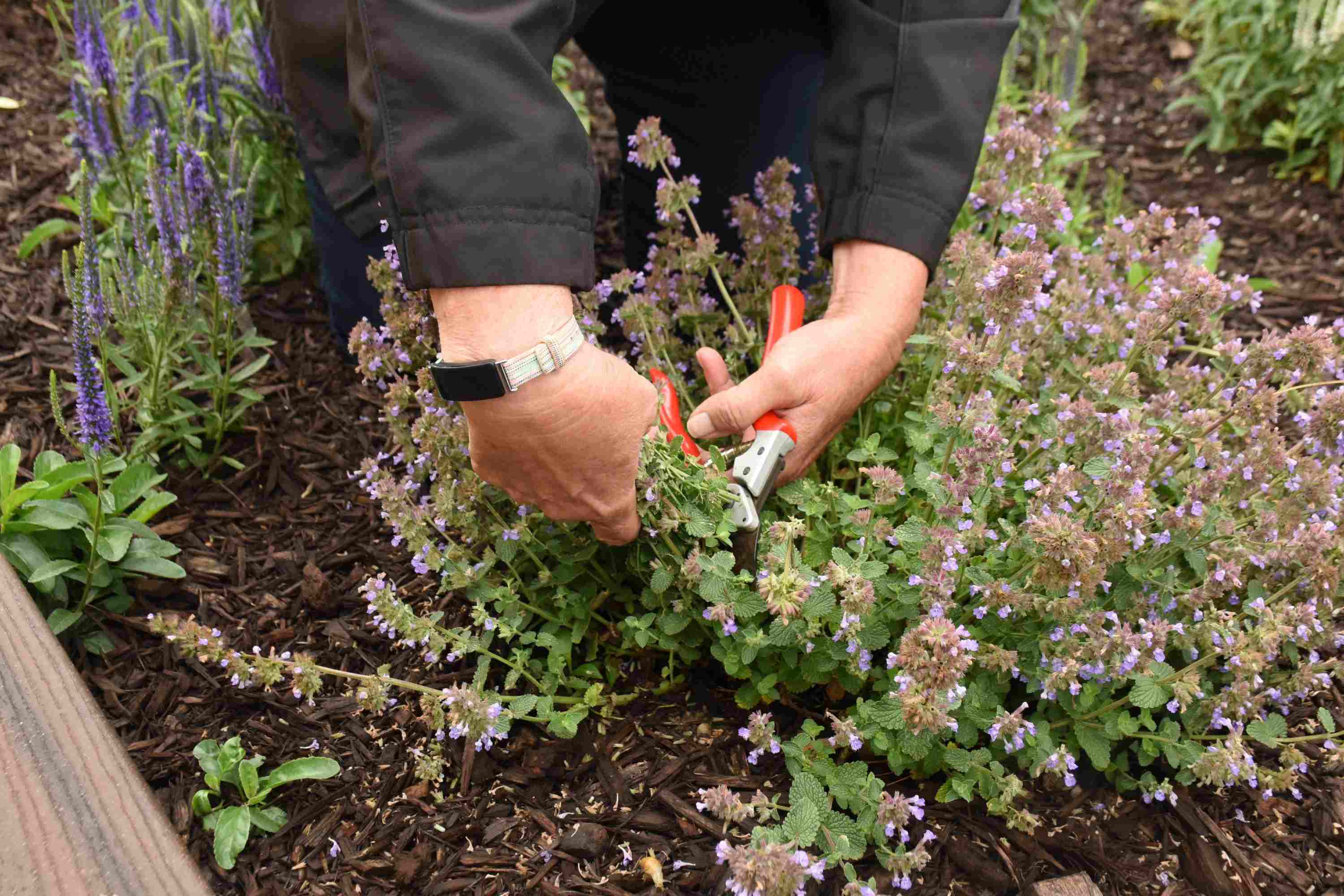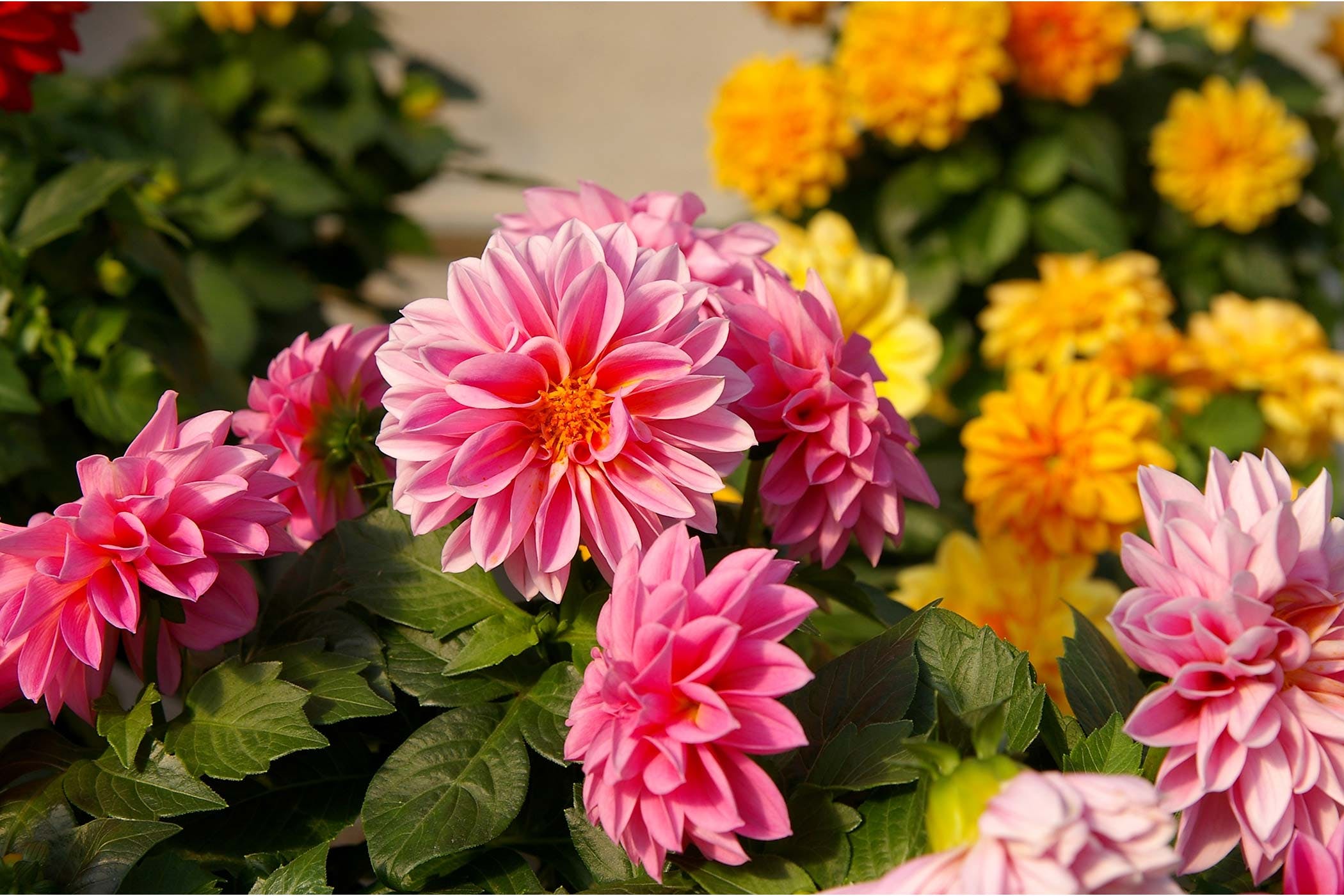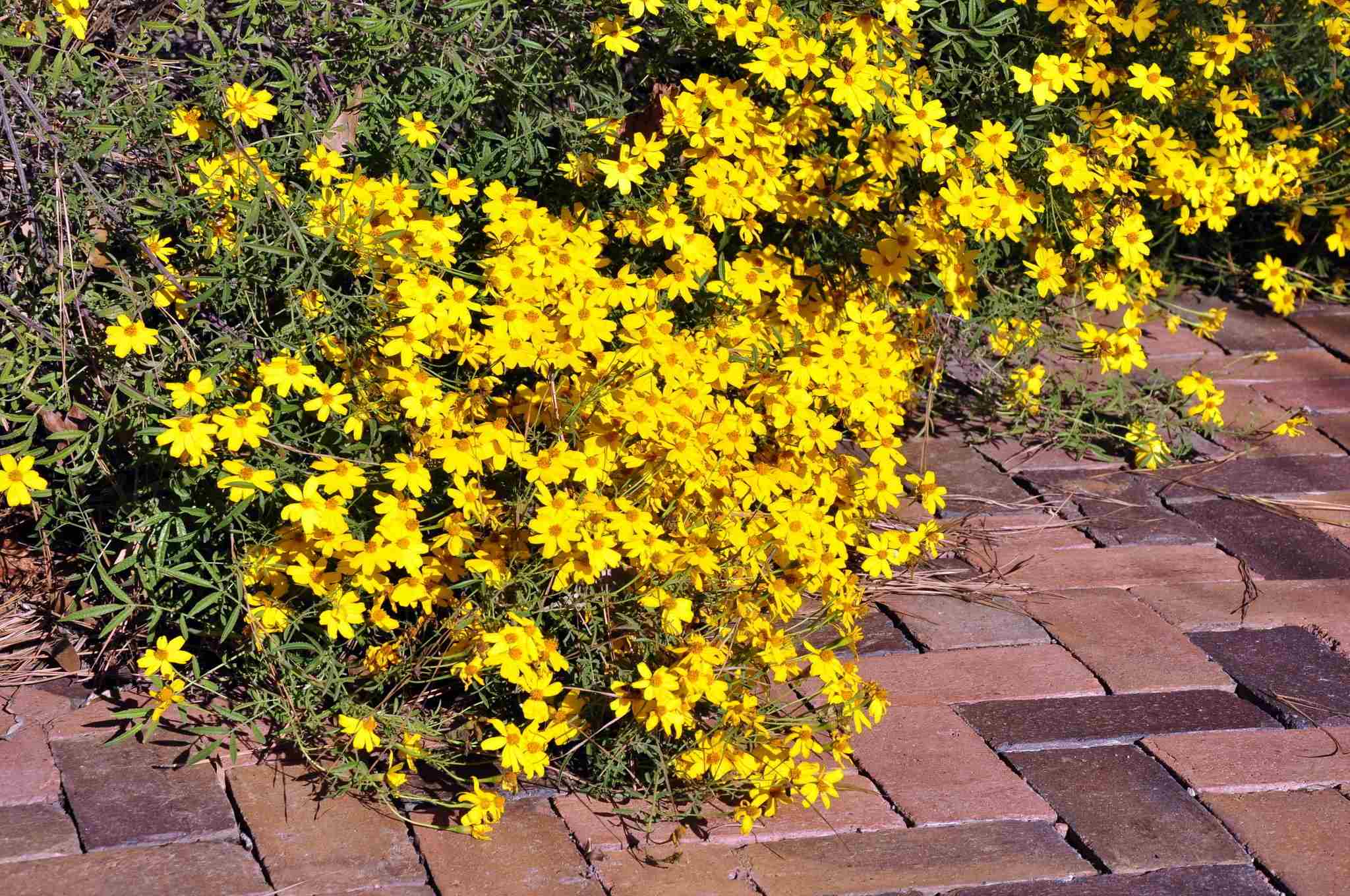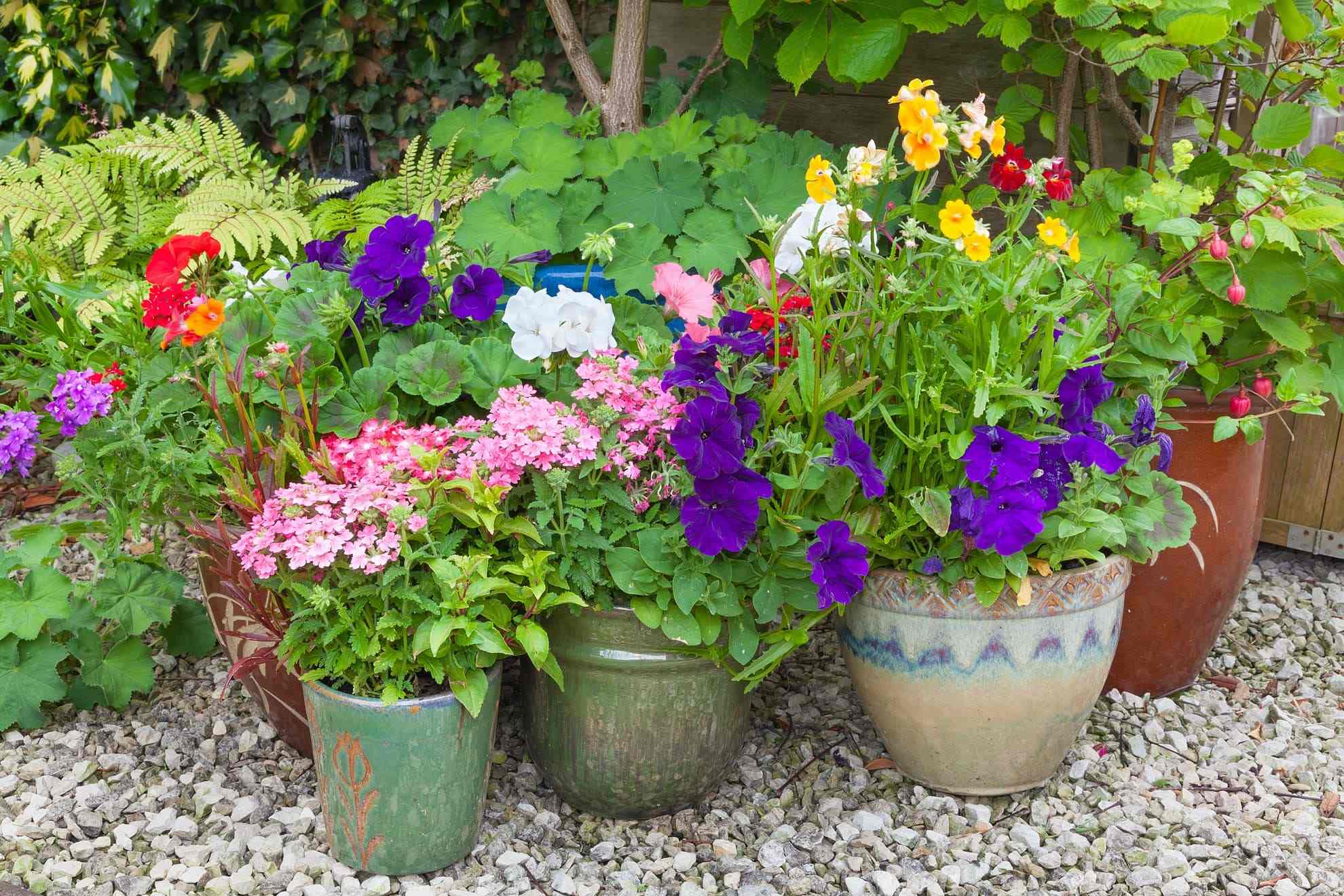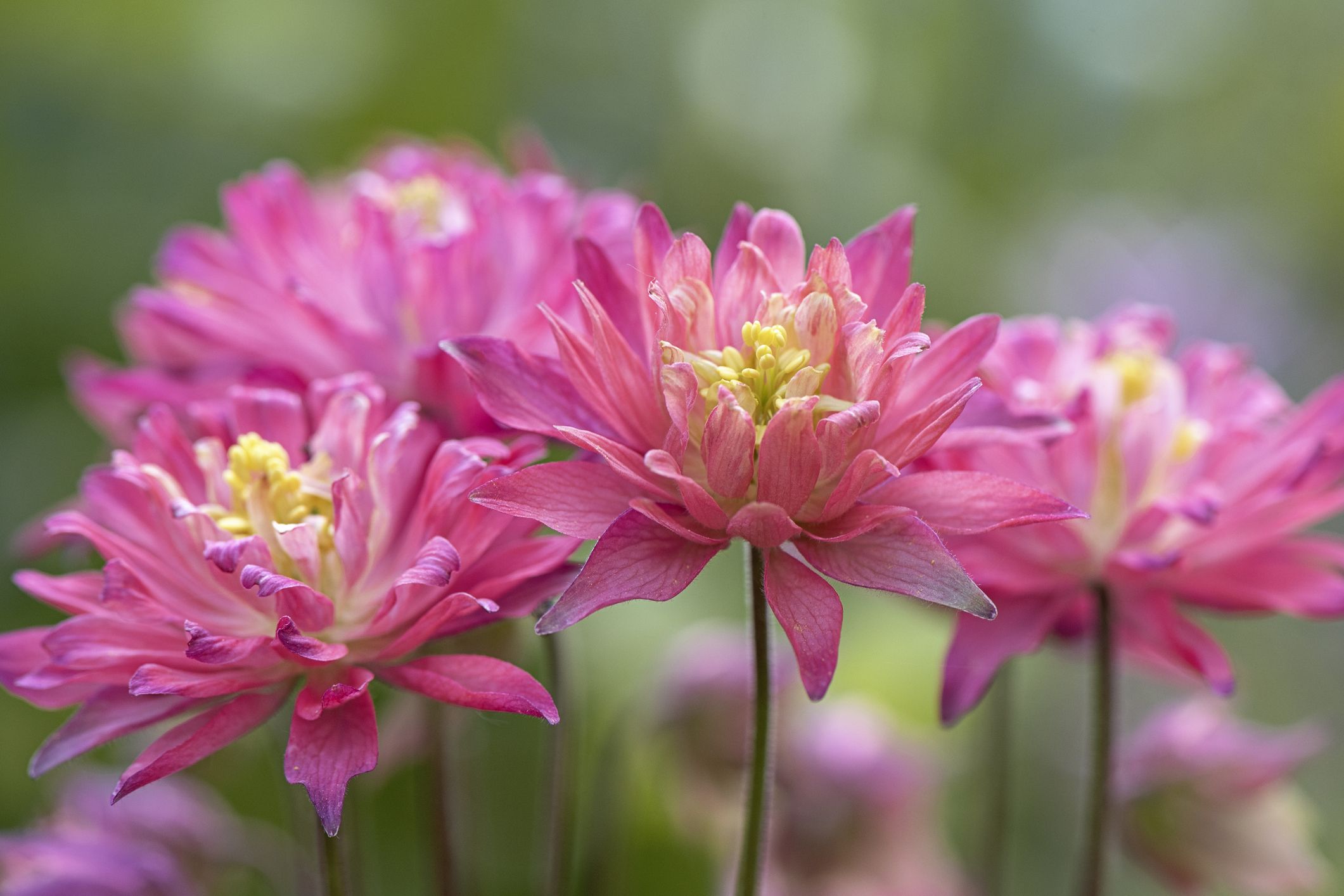Home>Types of Gardening>Ornamental Gardening>Which Sunflowers Are Perennials
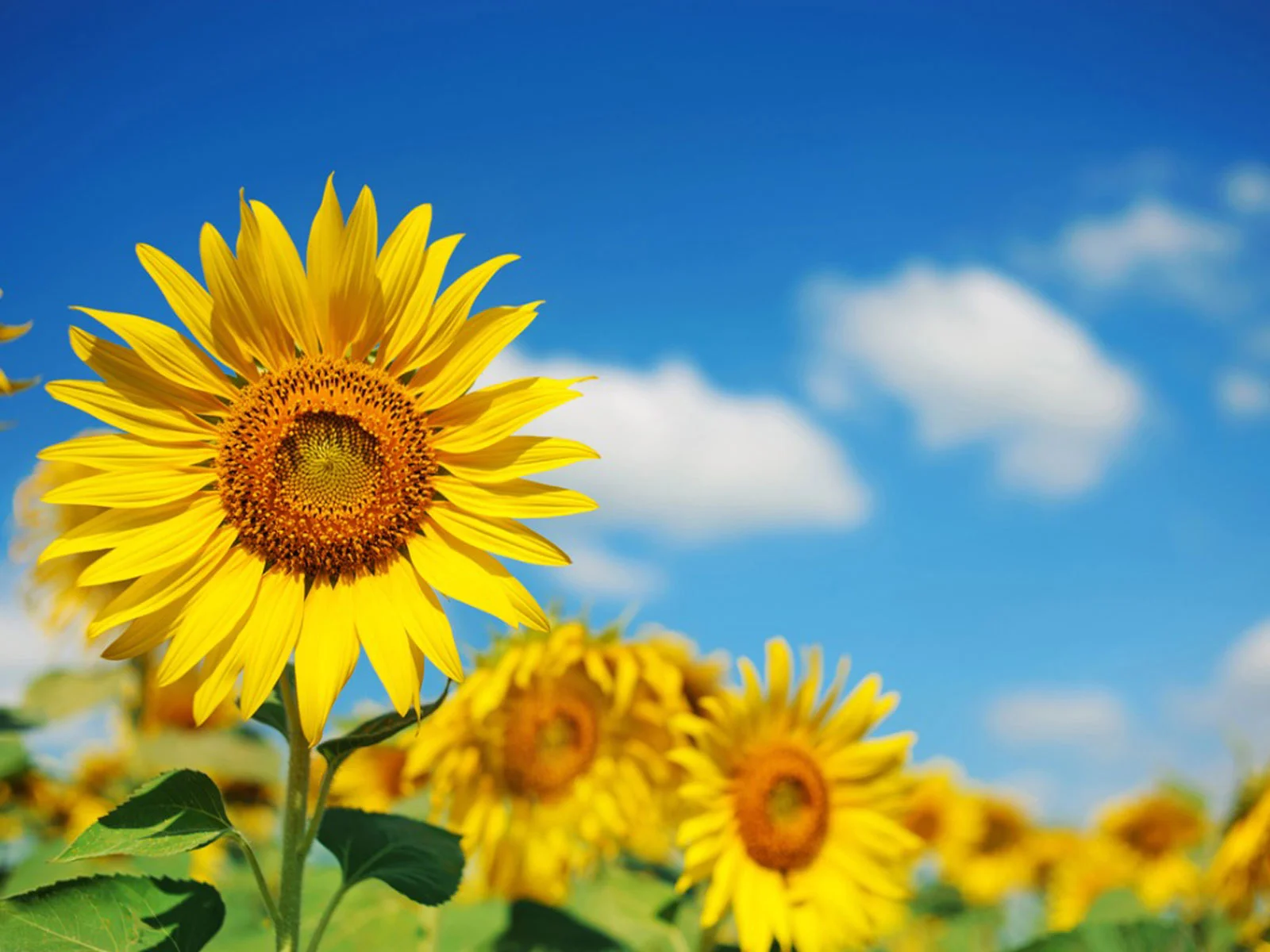

Ornamental Gardening
Which Sunflowers Are Perennials
Modified: January 22, 2024
Discover the best perennial sunflowers for your ornamental gardening needs. Find out which varieties will thrive year after year in your garden.
(Many of the links in this article redirect to a specific reviewed product. Your purchase of these products through affiliate links helps to generate commission for Chicagolandgardening.com, at no extra cost. Learn more)
Table of Contents
Introduction
Sunflowers are iconic flowers that bring warmth and beauty to any garden or landscape. These vibrant blooms with their large, yellow petals and dark centers are a favorite among gardeners and nature enthusiasts alike. While most people are familiar with sunflowers as annual plants that need to be replanted every year, there are actually perennial varieties of sunflowers that can grace your garden year after year.
Perennial plants are those that live for more than two years, continuously coming back each growing season. They provide a sense of stability and longevity in a garden, as they establish deep-rooted systems that allow them to survive through different weather conditions and blossom year after year.
In contrast, annual plants complete their life cycle within a single growing season. They germinate from seeds, grow, flower, produce seeds, and then die, all within one year. Annuals are known for their quick growth and abundant blooms, but they require consistent replanting to maintain their presence in the garden.
Most people think of sunflowers as annuals because they are commonly found in gardens as such. The classic sunflowers we see in fields and gardens – the towering Helianthus annuus varieties – are indeed annuals. These sunflowers have a fast growth cycle, going from seed to maturity in a matter of months, producing impressive, multi-headed flowers that attract bees, birds, and butterflies.
However, there is a lesser-known side to sunflowers – perennial varieties. Perennial sunflowers, belonging to the Helianthus family, are a delightful addition to any garden, with their beautiful flowers and ability to return year after year. These sunflowers often have smaller blooms compared to their annual counterparts, but they make up for it with their longevity and ability to withstand colder temperatures.
In the following sections, we will explore the different types of sunflowers and focus on perennial sunflowers specifically. We will discuss the factors that influence sunflower perenniality and highlight some common varieties. Additionally, we will provide valuable insights on how to care for perennial sunflowers to ensure their health and longevity. So, let’s dive in and discover the world of perennial sunflowers!
What are perennials?
Perennials are plants that have the remarkable ability to live for more than two years. Unlike annual plants that complete their life cycle within a single growing season, perennials continue to grow and bloom year after year. These plants establish strong root systems that allow them to survive through winter dormancy and regrow in the following growing season.
One of the advantages of growing perennials is that they offer a sense of stability and longevity in a garden. Once established, they become a consistent presence, providing year-round beauty and adding depth to your landscape. Perennials often form lush foliage and feature vibrant flowers that can vary in color, shape, and size, making them a versatile choice for gardeners.
Another benefit of perennials is their ability to adapt to different weather conditions and environmental factors. Their deep-rooted systems help them to access nutrients and water from deeper soil layers, making them more resilient during dry periods. Perennials also have the advantage of not needing to be replanted each year, saving gardeners time and effort in garden maintenance.
Perennials are classified into different categories based on their growth habit and life cycle. Herbaceous perennials are non-woody plants that die back to the ground during winter but regrow from the roots in the spring. Examples of herbaceous perennials include daylilies, hostas, and coneflowers.
Woody perennials, on the other hand, have persistent, above-ground structure such as stems, branches, and trunks. Trees and shrubs fall into this category, providing height, structure, and shade in a garden.
Perennial plants can also be further classified as evergreen or deciduous. Evergreen perennials retain their foliage throughout the year, providing greenery even in the winter months. Examples of evergreen perennials include hellebores, lavender, and yucca plants. Deciduous perennials, on the other hand, shed their leaves in the fall and go dormant during the winter, only to regrow in the spring.
With their longevity, adaptability, and aesthetic appeal, perennials are a popular choice among gardeners. By selecting a variety of perennials with different bloom times, you can ensure continuous color and interest in your garden throughout the year.
In the next section, we will explore annual plants and how they differ from perennials to help you better understand the unique characteristics of both types. So let’s dive in!
What are annuals?
Annual plants are a popular choice among gardeners due to their quick growth, vibrant blooms, and ability to provide a burst of color in a short amount of time. Unlike perennial plants that live for more than two years, annuals complete their life cycle within a single growing season.
The life cycle of an annual plant starts from seed germination, followed by vegetative growth, flowering, seed production, and eventually, death. This entire process usually occurs within one year, although some fast-growing annuals can complete their life cycle in just a few months.
Annual plants have evolved to prioritize reproduction over longevity. They invest energy into producing abundant flowers and seeds to ensure their species’ survival. This is why annuals tend to bloom prolifically and attract pollinators such as bees, butterflies, and birds.
Since annual plants don’t come back year after year, they require consistent replanting to maintain their presence in the garden. This aspect can be both a disadvantage and an advantage. On one hand, replanting annuals gives gardeners the opportunity to experiment with different plant varieties and create new color schemes every year. On the other hand, it requires time, effort, and resources to sow seeds or purchase new plants each growing season.
Annuals are particularly useful for adding seasonal interest to a garden or filling gaps between perennial plants. They are commonly used in flower beds, containers, hanging baskets, and borders. Due to their quick growth and ability to bloom within a short period, annuals provide instant gratification, quickly transforming a dull space into a vibrant and lively garden.
Some popular annual flowers include marigolds, petunias, zinnias, and impatiens. These plants often have bold and eye-catching blooms in a wide range of colors, making them a delightful addition to any garden.
It’s important to note that while annuals may not come back year after year, they can sometimes self-seed or disperse seeds that may germinate in subsequent growing seasons. This can result in the appearance of “volunteer” plants, adding a touch of unexpected beauty to the garden.
Understanding the distinction between annual and perennial plants is essential for planning and designing your garden. By incorporating a balance of both annuals and perennials, you can create a dynamic and ever-changing landscape that offers beauty and interest throughout the seasons.
In the next sections, we will explore sunflowers as both annuals and perennials, providing insights into their characteristics, care, and selection. So let’s dive in and discover the world of sunflowers!
Sunflowers as annuals
Sunflowers are well-known annual plants that are loved for their cheerful and vibrant blooms. Among the most recognizable sunflowers is Helianthus annuus, the classic sunflower variety that typically grows tall with large golden-yellow flower heads and dark centers.
As annual plants, sunflowers complete their life cycle within a single growing season. They begin as seeds, germinating and quickly establishing roots and foliage. Over a span of a few months, sunflowers grow rapidly, reaching impressive heights and producing multiple flower heads on a single plant.
Sunflowers are known for their ability to thrive in full sun, requiring at least six to eight hours of direct sunlight a day. They have sturdy stems that support their tall stature and large flower heads. The flowers themselves are composed of numerous individual florets, creating a striking visual display.
The prolific blooms of annual sunflowers make them a popular choice for adding color and visual impact to gardens, borders, and landscapes. Their bright yellow petals and contrasting dark centers attract pollinators like bees and butterflies, making them valuable for promoting biodiversity and supporting the ecosystem.
In addition to their ornamental value, sunflowers are also cultivated for their edible seeds, which are rich in nutrients and often consumed as a snack or used in cooking and baking. These seeds are not only tasty but also offer health benefits, including a good source of healthy fats, protein, and vitamins.
Growing sunflowers as annuals is a relatively straightforward process. They can be started from seeds indoors and transplanted to the garden after the last frost, or directly sown into the ground once the soil has warmed up. Sunflowers prefer well-draining soil and regular watering, especially during dry spells.
One of the advantages of annual sunflowers is the wide variety of cultivars available. Gardeners can choose from different sizes, colors, and even unique shapes of sunflowers to suit their preferences and garden space. There are dwarf varieties that are more suitable for containers and smaller gardens, as well as branching varieties that produce multiple flower heads on shorter stems.
Unfortunately, the downside of growing sunflowers as annuals is that their lifespan is limited to a single growing season. Once the sunflower has completed its cycle, it will produce seeds and eventually wither and die. This means that each year, gardeners need to replant sunflowers to enjoy their vibrant beauty and benefits.
Next, let’s explore the fascinating world of sunflowers as perennials and learn about their characteristics and care requirements. So, keep reading to discover the wonders of perennial sunflowers!
Sunflowers as perennials
While sunflowers are commonly known as annuals, there are also perennial varieties that can bring long-lasting beauty to your garden. Perennial sunflowers, belonging to the Helianthus family, have the remarkable ability to come back year after year, making them a valuable addition to any landscape.
Perennial sunflowers offer several advantages over their annual counterparts. Firstly, they have a longer lifespan, allowing you to enjoy their blooms for multiple growing seasons without the need for replanting. This saves time and effort in the garden while providing a consistent source of beauty.
Perennial sunflowers also tend to be hardier and more resilient to environmental conditions, including cold temperatures and drought. They have deep root systems that help them withstand challenging weather, ensuring their survival and vigor. This resilience makes them a reliable choice for gardeners in various climates.
One notable difference between perennial sunflowers and annual sunflowers is their size. Perennial varieties often have smaller flowers compared to the showy and large blooms of annual sunflowers. However, what they lack in size, they make up for with their ability to form dense clusters of flowers, creating a stunning visual impact in the garden.
Another unique feature of perennial sunflowers is their ability to attract a wide range of pollinators, such as bees, butterflies, and birds. The nectar-rich flowers provide a valuable food source for these beneficial creatures, supporting biodiversity and ecological balance in your garden.
There are several factors that contribute to the perennial nature of sunflowers. One key element is their ability to form underground rhizomes or stolons, which are modified stems that grow horizontally and produce new shoots and roots. This allows the sunflower plant to spread and regenerate from its existing root system, enabling it to persist year after year.
It’s important to note that while perennial sunflowers have the ability to return each year, they may experience a decline in vigor over time. This is why it’s crucial to provide proper care and maintenance to ensure healthy growth and continuous blooming. Regular pruning, fertilizing, and dividing of clumps can help rejuvenate perennial sunflowers and promote their longevity.
There are several popular varieties of perennial sunflowers to choose from, including Helianthus angustifolius (narrow-leaved sunflower), Helianthus maximiliani (Maximilian’s sunflower), and Helianthus tuberosus (Jerusalem artichoke). These varieties offer diverse heights, colors, and foliage characteristics, allowing you to find the perfect perennial sunflower for your garden.
In the next section, we will explore the factors that can influence the perenniality of sunflowers, as well as provide guidance on how to care for perennial sunflowers to ensure their health and longevity. So, read on to discover valuable tips for growing these beautiful and enduring flowers!
Factors that affect sunflower perenniality
The perenniality of sunflowers, or their ability to return year after year, can be influenced by various factors. Understanding these factors can help gardeners create optimal conditions for their perennial sunflowers and promote their long-term growth and blooming.
One key factor that affects sunflower perenniality is the specific variety or cultivar being grown. Not all sunflowers have the inherent ability to come back as perennials. It’s important to choose sunflower varieties that are known for their perennial nature, such as Helianthus angustifolius, Helianthus maximiliani, or Helianthus tuberosus. These varieties have the genetic traits and capabilities to persist and thrive over multiple growing seasons.
Climate is another crucial factor that influences sunflower perenniality. Different sunflower varieties have different climate preferences, and it’s essential to choose varieties that are well-suited to your specific climate zone. While some sunflowers can tolerate a wide range of temperatures and conditions, others are more sensitive and require specific environmental conditions to survive and thrive. Understanding your climate and selecting sunflowers accordingly will greatly enhance their chances of returning as perennials.
Soil conditions play a significant role in sunflower perenniality as well. Perennial sunflowers prefer well-drained soils that are rich in organic matter. The soil should have good water retention capability, while also allowing excess water to drain away, preventing root rot. Testing the soil to assess its pH level and nutrient content is recommended. Amending the soil with organic matter, such as compost, can improve its fertility and structure, providing an optimal growing environment for perennial sunflowers.
Proper care and maintenance are vital factors that influence the perenniality of sunflowers. Regular watering, especially during dry spells, is important to ensure that the plants receive adequate moisture. However, it’s equally essential to avoid overwatering, as excessive moisture can lead to root rot. Providing a layer of mulch around the base of the plants can help conserve soil moisture and regulate temperature.
Pruning and dividing perennial sunflowers are crucial practices for maintaining their health and promoting their longevity. Regularly removing dead or damaged foliage and spent flower heads can prevent disease and allow for fresh growth. Dividing clumps of sunflowers every few years can rejuvenate the plants and prevent overcrowding, enabling them to continue thriving.
Lastly, pests and diseases can affect the perenniality of sunflowers. Common pests that can damage sunflowers include aphids, slugs, and caterpillars. Regular monitoring and applying appropriate pest control measures can help protect the plants. In terms of diseases, sunflowers are susceptible to fungal infections, powdery mildew, and downy mildew. Ensuring proper air circulation and avoiding overhead watering can reduce the chances of these diseases taking hold.
By considering these factors and providing the necessary care, sunflowers can be encouraged to return as perennials, bringing years of beauty and enjoyment to your garden. In the next section, we will explore some popular perennial sunflower varieties that you can consider for your garden. So, keep reading to discover your options and select the right perennial sunflowers for your landscape!
Common perennial sunflower varieties
Perennial sunflowers add a touch of beauty and longevity to any garden, and there are several popular varieties to choose from. These varieties offer diverse heights, colors, and foliage characteristics, allowing you to find the perfect perennial sunflowers to suit your garden’s aesthetics and requirements. Here are some common perennial sunflower varieties to consider:
1. Helianthus angustifolius: Also known as narrow-leaved sunflower, this variety is native to North America. It features slender, lance-shaped leaves and produces bright yellow flowers with dark centers. Helianthus angustifolius typically grows to a height of 4 to 6 feet (1.2 to 1.8 meters), making it a stunning addition to the back of a garden border.
2. Helianthus maximiliani: Maximilian’s sunflower is a tall and robust perennial sunflower that can reach heights of up to 10 feet (3 meters). It boasts numerous bright yellow, daisy-like flowers that bloom late in the season, extending the beauty of your garden well into fall. Helianthus maximiliani is highly attractive to pollinators, making it an excellent choice for promoting biodiversity.
3. Helianthus tuberosus: Also known as Jerusalem artichoke or sunchoke, Helianthus tuberosus is a unique perennial sunflower that produces edible tubers. Its upright stems can grow to heights of 6 to 10 feet (1.8 to 3 meters), adorned with bright yellow flowers. While it is primarily grown for its edible tubers, the flowers of Helianthus tuberosus provide a charming display in the garden.
4. Helianthus mollis: Commonly known as downy sunflower, this perennial variety is characterized by its gray-green leaves, covered in a soft, downy texture. Helianthus mollis produces bright yellow flowers with dark centers and typically reaches a height of 3 to 6 feet (0.9 to 1.8 meters). Its unique foliage adds an interesting contrast to any landscape.
5. Helianthus salicifolius: Also called willowleaf sunflower, this perennial variety features slender, lance-shaped leaves resembling those of a willow tree. Its vibrant yellow flowers with dark centers bloom from late summer to fall, attracting a variety of pollinators. Helianthus salicifolius is a compact sunflower, reaching heights of 3 to 6 feet (0.9 to 1.8 meters), making it suitable for smaller gardens or container growing.
These are just a few examples of the many perennial sunflower varieties available. When selecting a variety for your garden, consider factors such as height, flower color, bloom time, and overall growth habit to ensure it fits well with your landscape design.
In the next section, we will delve into the essential care and maintenance practices for perennial sunflowers, ensuring their health and longevity in your garden. So, stay tuned for valuable tips on growing and nurturing these enduring beauties!
How to care for perennial sunflowers
Caring for perennial sunflowers is essential to ensure their health, longevity, and continuous blooming. By providing the right conditions and regular maintenance, you can enjoy the beauty of these enduring flowers year after year. Here are some important care tips to keep in mind:
1. Sunlight: Perennial sunflowers thrive in full sun and require at least six to eight hours of direct sunlight daily. Make sure to plant them in a location that receives ample sunlight throughout the day, as insufficient light can lead to weak growth and fewer blooms.
2. Soil: Perennial sunflowers prefer well-drained soil that is rich in organic matter. Before planting, amend the soil with compost or well-rotted manure to improve its fertility and drainage. Avoid heavy clay soils that can hold excessive moisture and potentially cause root rot.
3. Watering: While perennial sunflowers are relatively drought-tolerant once established, regular watering is crucial during dry spells or hot summer months. Water deeply at the base of the plant to encourage deep root growth. Aim to keep the soil evenly moist, but avoid overwatering, as excessive moisture can lead to root diseases.
4. Mulching: Apply a layer of organic mulch, such as straw or wood chips, around the base of perennial sunflowers. Mulch helps to retain soil moisture, regulate soil temperature, and suppress weed growth. It also protects the roots from extreme temperatures and provides nutrients as it breaks down.
5. Pruning: Regular pruning is important for maintaining the health and appearance of perennial sunflowers. Remove any dead or damaged foliage to prevent disease and improve air circulation. Deadhead spent flowers to encourage continuous blooming and prevent self-seeding, especially if you want to control the spread of perennial sunflowers in your garden.
6. Dividing and Propagation: Over time, perennial sunflowers may become overcrowded, leading to reduced blooming and vigor. Dividing clumps every few years can help rejuvenate the plants. Dig up the clump, separate it into smaller sections, and replant them in well-prepared soil. This process promotes healthier growth and allows you to propagate new plants.
7. Pest and Disease Control: Monitor your perennial sunflowers for common pests such as aphids, slugs, and caterpillars. If necessary, control these pests with organic methods, such as handpicking or using insecticidal soap. Regularly inspect the plants for signs of fungal diseases like powdery mildew or downy mildew. If detected, treat the plants with appropriate fungicides, following the instructions carefully.
8. Support: Tall varieties of perennial sunflowers may require support to prevent them from toppling over in strong winds or heavy rain. Install stakes or place supportive structures, such as bamboo stakes or trellises, near the plants during their early growth stages to provide stability.
By following these care tips, you can ensure the health and longevity of your perennial sunflowers, allowing them to thrive and bring beauty to your garden year after year. With their vibrant blooms and enduring presence, perennial sunflowers are sure to bring joy and delight to any gardener.
Conclusion
Perennial sunflowers are a wonderful addition to any garden, offering long-lasting beauty and the pleasure of seeing them return year after year. While sunflowers are commonly known as annuals, there are specific varieties that possess the inherent ability to persist as perennials. These sunflowers bring not only vibrant blooms but also a sense of stability and resilience to your garden.
Understanding the factors that influence sunflower perenniality, such as variety selection, climate considerations, soil conditions, and proper care, is crucial for successful cultivation. By choosing suitable perennial sunflower varieties, providing optimal growing conditions, and implementing regular maintenance practices, you can ensure their health, blooming, and longevity.
Perennial sunflowers have unique characteristics and requirements that differ from annual sunflowers. Their smaller flower heads and longer lifespan contribute to their charm and endurance. They also serve as valuable sources of nectar for pollinators, supporting biodiversity and the ecosystem.
Whether you choose Helianthus angustifolius, Helianthus maximiliani, Helianthus tuberosus, or any other perennial sunflower variety, they are bound to bring a touch of beauty, color, and life to your garden. With their tall stature, cheery blooms, and ability to withstand various weather conditions, perennial sunflowers make stunning additions to borders, flower beds, or even as focal points in your landscape.
So, consider incorporating perennial sunflowers into your gardening plans and enjoy the rewards of their splendor year after year. With proper care and attention, these enduring flowers will continue to bring joy and create an uplifting atmosphere in your outdoor space.
Now armed with the knowledge of perennial sunflowers, their care requirements, and the diverse varieties available, you can confidently embark on your sunflower gardening journey. Embrace the beauty of these resilient flowers and create a garden that flourishes with color, life, and the enduring allure of perennial sunflowers.
